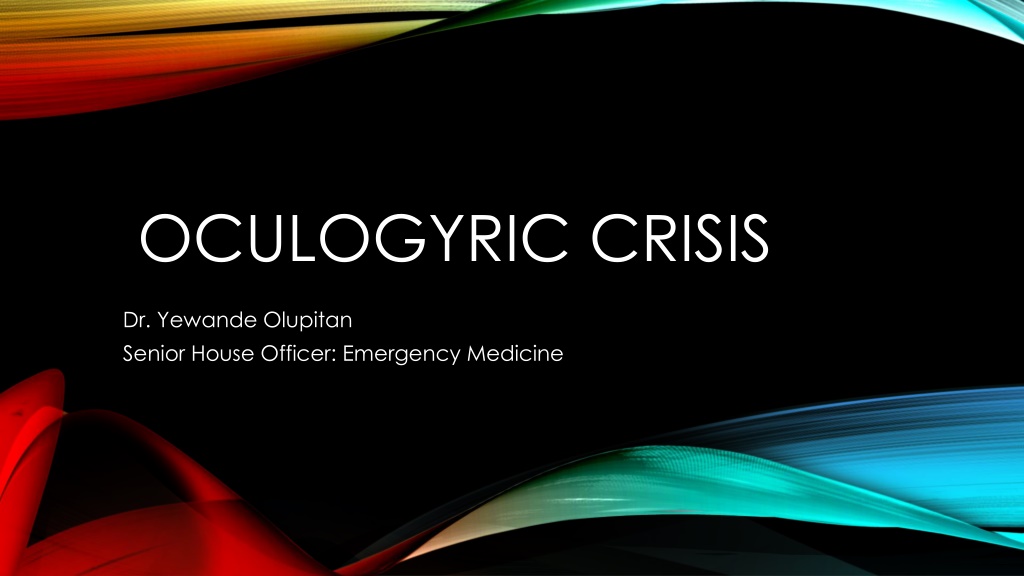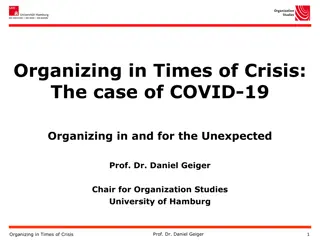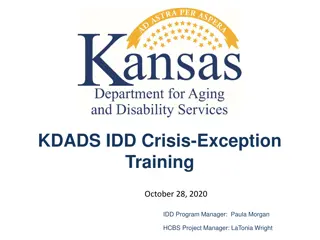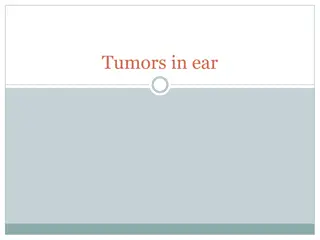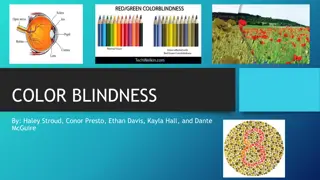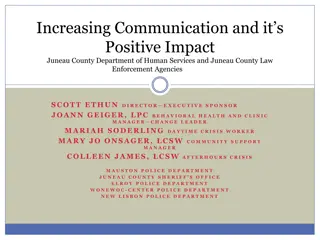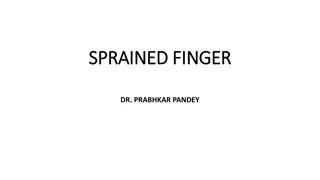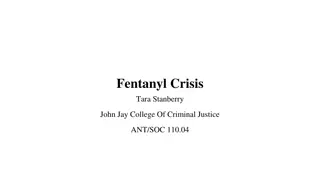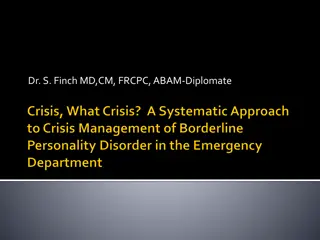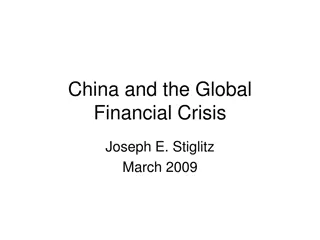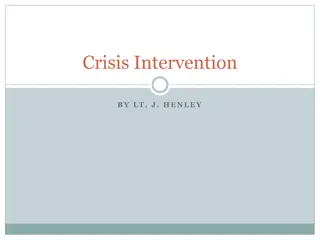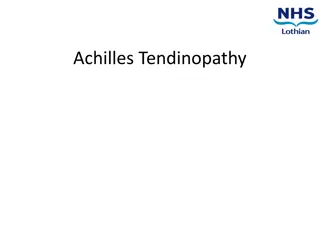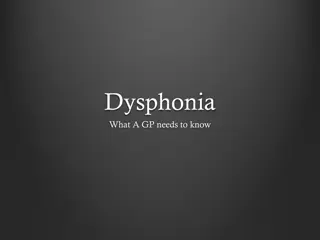Understanding Oculogyric Crisis: Symptoms, Causes, and Management
Oculogyric crisis is a rare but potentially serious condition characterized by sudden, involuntary movements of the eyes. It is often drug-induced and affects individuals differently. Symptoms can range from mild discomfort to severe distress, and prompt medical attention is crucial for proper diagnosis and management. This article explores the background, definition, epidemiology, causes, clinical features, and management strategies for oculogyric crisis.
Download Presentation

Please find below an Image/Link to download the presentation.
The content on the website is provided AS IS for your information and personal use only. It may not be sold, licensed, or shared on other websites without obtaining consent from the author. Download presentation by click this link. If you encounter any issues during the download, it is possible that the publisher has removed the file from their server.
E N D
Presentation Transcript
OCULOGYRIC CRISIS Dr. Yewande Olupitan Senior House Officer: Emergency Medicine
OUTLINE Background Definition Epidemiology Etiopathogenesis Clinical Features Management Differential Diagnosis Prognosis Conclusion
IT CAN BE LIKENED TO Spooky, Sudden & ..
BACKGROUND & DEFINITION Belongs to the group of Acute Dystonic Reactions. Often Ideosyncratic & Unpredictable occurrence. Defined as: An Acute Dystonic reaction of the ocular muscles characterised by bilateral elevation of visual gaze lasting from seconds to hours,
EPIDEMIOLOGY Under reported reaction Incidence varies according to individual susceptibility, drug identity, dose & duration of therapy. In rare instances(as with laryngeal involvement) does it become life- threatening or with resultant long term co- morbidity. Race,sex & age- related demographics- males, children, teens, young adults.
ETIOPATHOGENESIS Drug-induced alteration of dopamine-cholinergic balance in the nigrostriatum (basal ganglia) Most drugs produce Dystonic reactions by D2 receptor blockade, which leads to an excess striata like cholinergic output.
CAUSES Medication: Neuroleptics Metoclopromide Carbamazepine Lithium Levodopa Amantadine Chloroquine Benzodiazepines Diazoxide Nifedipine Tricyclics
CAUSES Brain Stem Lesion: Ischemic Neoplasticism Inflammatory Head Trauma Infections: Neurosyphilis Encephalitis Others: Inherited Errors of Metabolism
CLINICAL FEATURES History: Most commonly shortly after initiation of drug treatment-50% within 48 hrs, 90% within 5 days of initiation of treatment. Risk factors include: treatment with potent D2receptor agonist, emotional stress, fatigue, family history of Dystonic, recent cocaine or alcohol use.
SYMPTOMS Restlessness Agitation Malaise A Fixed Stare Maximal upward deviation of eyes(Converge,lateral or downward deviation) Backwards,lateral flexion of the neck Widely opened mouth Tongue protrusion Ocular protrusion
PATIENT ASSESSMENT Safety of Patient & Staff Vital Signs History/collateral information Careful review of medications Review of medical records Physical & Neurologic exam ( usually normal) Mental status exam(usually unaffected).
TREATMENT Emergency interventions other than pharmacological treatment rarely required. Anti cholinergic: Procyclidine, Benztropine Antihistamine: Diphenhydramine Consider discontinuing inciting agent & seek specialist opinion Continue melds PO for 48-72 hrs to prevent relapse Reassurance Environmental Maniupulation
DIFFERENTIAL DIAGNOSIS Seizure disorder Delirium Other Dystonias: Tardive, Parkinsonism, Akathisias.. CNS Lesion(focal basal ganglia or thalamus) Postencephalitic ParkinsonismTyrosine Hydroxlase Deficiency *A predictable,rapid resolution of symptoms following Rx confirms diagnosis. Failure to Improve should prompt clinician to consider alternative diagnosis.
PROGNOSIS Symptom relief within minutes with Anticholinergics Recurrent crisis may be observed on medication re-exposure No long term sequel are are expected once inciting agents are discontinued.
REFERENCES Medication-induced Dystonic reactions: JM Kowalski,A Ztarabar et Al Oculogyric crisis: Canadian Movement Disorder group Oculogyric crisis: Onuma Kalu MD Web PowerPoint
